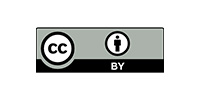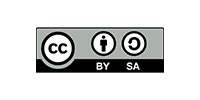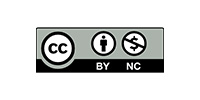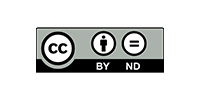Creative commons
/prod01/channel_8/media/scu-dep/services/copyright/images/cc.xlarge-1.png)
Creative Commons is a non-profit organization that works to increase the amount of creativity (cultural, educational, and scientific content) in 'the commons' - the body of work that is available to the public for free and legal sharing, use, repurposing, and remixing.
The Creative Commons YouTube video explains the different licences. Although the video is produced by New Zealand Creative Commons all the conditions remain the same. To go to the Australian commons replace /nz with /au in the URL.
Most browsers also offer a drop down in the search box toolbar that allows you to search Creative Commons licenced materials. Search creative commons.
Creative Commons provides free, easy-to-use legal tools that give everyone from individual creators to major companies and institutions a simple, standardized way to pre-clear copyrights to their creative work. CC licenses let people easily change their copyright terms from the default of 'all rights reserved' to 'some rights reserved.
Creative Commons licenses are not an alternative to copyright. They apply on top of copyright, so you can modify your copyright terms to best suit your needs. Creative Commons have collaborated with intellectual property experts all around the world to ensure that their licenses work globally.
All of their tools are free and can be viewed at Creative Commons.
The Creative Commons site has more information on:
- the history and theory behind Creative Commons
- an explanation of the basic licence protocols and the baseline rights associated with the CC standard licences
- an explanation of the legal concepts, including information on the public domain, the commons, open content and intellectual property conservancies
- things to think about before using a Creative Commons licence
Creative Commons Australia (CCau) is the Australian derivative project of the international Creative Commons project.
They manage the Australian versions of the Creative Commons licences and conduct research and education activities designed to foster a creative and innovative community in our region. Hosted at Queensland University of Technology in Brisbane, CCau is devoted to the promotion of Creative Commons in Australia.
Australia is one of over 45 countries worldwide who have taken up the Creative Commons project.
The same basic principles apply to providing attribution across all CC licences. When attributing a work under a CC licence you should:
- Credit the creator;
- Provide the title of the work;
- Provide the URL where the work is hosted;
- Indicate the type of licence it is available under and provide a link to the licence (so others can find out the licence terms); and
- Keep intact any copyright notice associated with the work.
Creative Commons Australia provides the following tips on attributing material licenced under Creative Commons and their website contains various examples of different mediums.
| Medium | Attribution tips |
|---|---|
| Books, magazines, journals |
Remembering to spell out the licence type and URL in full, include the relevant attribution information next to the CC work or as a footer along the bottom of the page on which appears. Alternatively, you can list the CC works in the back of the publication. If you take this option, it is best to indicate the page number of the work or order in which they appear in the publication. |
| Photos and images |
Provide the relevant attribution next to the photograph, or close by (eg on the edge or bottom of the page) if that is too obtrusive. |
| Slideshows |
Include the relevant attribution information next to the CC work or as a footer along the bottom of the work on each slide on which the work appears. Alternatively, you can include a 'credits' slide at the end of the show, that lists all the materials used and their attribution details. Again, you should indicate the slide or order so people can find the attribution for a specific work. |
| Film |
Include the relevant attribution information with the work when it appears on screen during the film. If this is not possible, attribute the work in the credits, just as you would see in a normal film. |
| Podcasts |
Mention the name of the artist and that it is under a CC licence during the podcast, like a radio announcement, and provide full attribution on your website, next to where the podcast is available. |
Open Educational Resources (OERs)
OER are teaching, learning and research materials in any medium that reside in the public domain and have been released under an open licence that permits access, use, repurposing, reuse and redistribution by others with no or limited restrictions (Atkins, Brown & Hammond, 2007). The use of open technical standards improves access and reuse potential.
Creative Commons licences are generally applied to OER materials. What you are permitted to do with each type of licence and how you attribute is outlined below.
| License | License details | Explanation | Summary |
|---|---|---|---|

CC BY |
Attribution |
Materials with this licence can be used and repurposed, even for commercial purposes. This makes them very safe for use in your teaching, as there is no conflict with SCU's IP policy. As with all the other licences, you need to ensure you attribute the work correctly. |
Very generous terms make this the most useful licence View Australian Licence Deed |

CC BY-SA |
Attribution-Share Alike |
If you are using, but not changing materials with a Share Alike licence, this can be a great licence for teaching and learning material. Just ensure you attribute the work appropriately. However if you are planning to change and repurpose the material (ie. make a derivative), then you are required to licence the new material with the same Attribution-Share Alike licence. This may be in conflict with SCU's Intellectual Property policy, which states that material created for teaching purposes remains the property of SCU. |
Generous and useful, but may conflict with SCU IP Policy. View Australian Licence Deed |

CC BY-NC |
Attribution-Noncommercial |
Using material with this licence may be fine for teaching at SCU, as it is educational rather than commercial use. The licence allows you to adapt the material and change the CC licence of the derivative (as long as it is not commercial). Be aware, however, using materials with this licence cannot be sold later for commercial purposes. |
Appropriate licence for SCU educational materials (with no commercialisation). View Australian Licence Deed |

CC BY-NC-SA |
Attribution-Noncommercial-Share Alike |
Whilst this licence allows adaption of material, the Share Alike component means that repurposed work would need to have an open licence. This may conflict with SCU IP Policy. Noncommercial component is fine for SCU educational materials that are not to be commercialised at any stage. |
Generous for adapting educational work but potential conflicts with SCU IP Policy. View Australian Licence Deed |

CC BY-ND |
Attribution-No Derivative Works |
This licence allows you to use the materials for teaching at SCU, but you cannot change them. This allows you to embed the resources in a larger educational resource. However ensure that you leave the material whole and unchanged and attribute it appropriately. |
Good when just using material, but cannot change or adapt. View Australian Licence Deed |

CC BY-NC-ND |
Attribution-NonCommercial-No Derivative Works |
Material with this licence cannot be adapted, and has the potential issue of the non-commercial restriction. This material would be suitable for inclusion in a reading list but cannot be repurposed. |
Use this type of material as supplemental learning materials and do not repurpose it. View Australian Licence Deed |
Atkins, D.E., Brown, J.S., & Hammond, A.L. (2007). A review of the open educational resources (OER) movement: Achievements, challenges, and new opportunities. Retrieved from www.oerafrica.org/resource/review-open-educational-resources-oer-movement-achievements-challenges-and-new
The information on this page has been adapted from and is licensed under a CC BY 3.0 Licence.

/prod01/channel_8/media/scu-dep/current-students/images/Coffs-harbour_student-group_20220616_33.jpg)
/prod01/channel_8/media/scu-dep/current-students/services/counselling/images/RS21533_English-College-Student_20191210_DSC_6961.jpg)
/prod01/channel_8/media/scu-dep/study/scholarships/images/STEPHANIE-PORTO-108-2.jpg)
/prod01/channel_8/media/scu-dep/study/arts-and-humanities/images/RS20958_Chin-Yung-Pang-Andy_20190309__79I5562-960X540.jpg)
/prod01/channel_8/media/scu-dep/experience/images/SCU-INTNL-STUDY-GUIDE-280422-256.jpg)
/prod01/channel_8/media/dep-site-assets/component-library/screenshots/online-1X1.jpg)